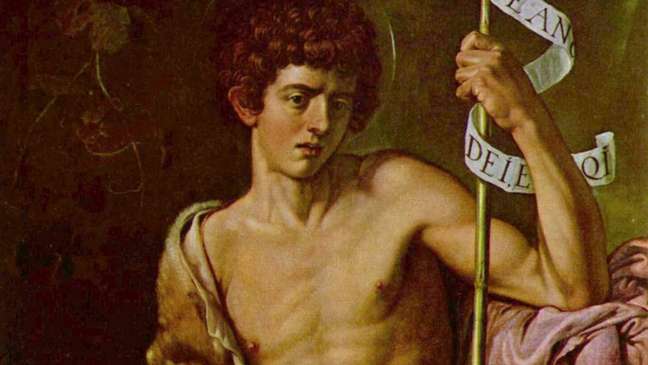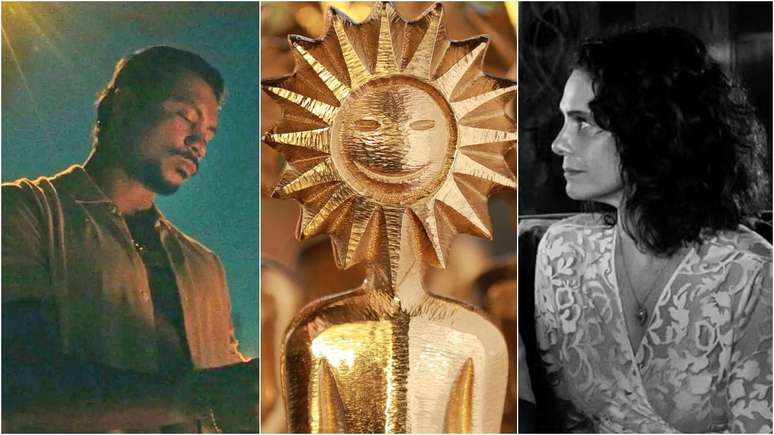John the Baptist was the man who, in a certain sense, opened the doors to the mission of Jesus. Itinerant preacher of Jewish origin, at the time he became the religious leader of a group of Jews, extolling the importance of values such as righteousness. and the practice of virtue.
It is a peculiar case within Christianity: a saint celebrated both for his birth, on June 24, and for his death, on August 29. Typically, Catholics celebrate the saint’s death as the day they are “born” of God.

John the Baptist was the man who, in a certain sense, opened the doors to the mission of Jesus. Itinerant preacher of Jewish origin, at the time he became the religious leader of a group of Jews, extolling the importance of values such as righteousness. and the practice of virtue. To purify souls he used baptism, performed in streams, in epiphanic ceremonies.
Baptism was not John’s invention, as it was already practiced at the time. The novelty he brought was the fact that he did not limit participation to Jews, allowing the rite to also serve the conversion of those who were considered pagans – and this aroused controversy among him.
According to the biblical texts, John was a relative of Jesus. He was the son of Zechariah, priest, and Elizabeth, cousin of Mary, mother of Jesus. According to the sacred literature, Jesus began his evangelizing mission only after he himself was baptized by his cousin in the waters of the Jordan River.
For many, John is exalted as the greatest of the prophets.
As often happened in religious groups of the time – such as Jesus himself – John’s preaching began to annoy the established power. Imprisoned for ten months, probably between the year 26 and the year 28 of the Christian era, John was sentenced to death by the sovereign Herod Antipas (20 BC – 39 AD). It is not known exactly how old John was when he was killed, but it is certain that he was older than his he cousin Jesus.
For a long time there was controversy over the historicity of John the Baptist. The main document, however, which certifies its existence is the book Jewish Antiquitieswritten by the Roman historian Josephus (37-100) probably in the year 94.
“John the Baptist is a biblical character, but in addition to this reference there is also a very important historian, Flávio Josefo, who refers to him in his works., Reflects the hagiographic scholar Thiago Maerki, researcher at the Federal University of São Paulo (Unifesp) and an associate of the Hagiography Society, in the United States.
“For a long time it was debated whether John the Baptist actually existed or whether it was a legendary literary construction. Everything indicates that he actually existed, due to witnesses outside the Church. [o livro de Josefo] more important, ”adds Maerki.
The researcher points out that Josephus “refers to John the Baptist” as someone “who used to gather a crowd around him to hear his preaching.” “There were, therefore, many followers. And that would have upset Herod,” says Maerki. “There was a fear that John might start a rebellion. His preaching annoyed the government. That’s why he ends up being arrested and then killed.”
According to ancient narratives, he was killed by beheading. And he was presented with the head on a tray.
“He lived in Galilee during the reign of Herod and had many followers, preached to the Jews and made baptism a symbol of purification of the soul. He was the son of Zechariah, priest, and of Elizabeth, cousin of Mary Most Holy. In addition to the cousin of Jesus. . His mother, Isabella, was Mary’s cousin, John, still in the womb, also celebrated Jesus in Mary’s womb as seen in Luke. He was also the forerunner of Jesus and his saving message “, adds the jiologist José Luís. Lira, founder of the Brazilian Academy of hagiology and professor at the State University of Vale do Aracaú, Ceará.
“It was not enough, he baptized Jesus. Therefore, not only Christianity, but various religions celebrate him. In general, John the Baptist is a martyr. He died in defense of the faith. And Jesus’ disciples treated him with reverence.”. In the Roman martyrology we find two celebrations of him, at his birth and at his martyrdom “, says the agiologist.
The symbolisms of John
Although this veneration for the character existed since the early Christians, Maerki remembers that Christianity officially made a solemnity of the nativity of St. John official only in the fourth century, “according to indications”. “Then, this celebration spread in the following centuries and, in the sixth century, there was a refinement of the feast, preceded by a solemn fast, with a mass on the eve and the like. In the Middle Ages there is a history of celebrations with three masses for the date “, contextualizes. “It was one of the most important, most cultivated and most popular festivals of the time. And this is important because we still know today that John the Baptist is one of the most popular, most revered saints, with a very strong tradition that dates back to the Middle Ages”.
Of course, the symbolisms are there, and the choice of dates like this, probably defined a posteriori, was not at all. “John the Baptist would have been conceived on the autumnal equinox and would have been born on the European summer solstice. This is important. ‘. Augustine interpreted this verse as an indirect reference to the birth of John the Baptist,” says Maerki.
“Some theologians still point out a certain parallelism with the Christmas of Jesus, which takes place in the European winter, when they analyze the Christmas of John, the European summer”, adds the researcher. “This would have given rise to folkloric manifestations, including the fires of São João which represent and symbolize the birth of the saint. It is the birth but it is also in reference to the beginning of summer. Taking root. Then they ended up being welcomed and cultivated also by the Church », says the researcher.
In any case, the biblical texts themselves grant John a special position. “John presents himself as the forerunner of the Messiah and this image is very strong, it is of the one who prepares the way of salvation”, Maerki emphasizes. “There is a whole messianic character. He will be appointed prophet who indicated in Christ the” lamb sent to atone for the sins of the world “, the one who would first see in Jesus the character of the one who would send from God. From there a new moment would begin in John’s preaching, not only announcing that the messiah was near but that this messiah would be Jesus himself, a biblical tradition that the Church then deepens, develops and celebrates ”.
The Gospel of Matthew, for example, presents John the Baptist much greater than a prophet, as the prophet of prophets. “Because, unlike the prophets who spoke of the future, he pointed to the messiah in the present. This is very strong in the religious tradition. He is someone who does not announce a distant future, he announces a messiah who is present, who makes himself present at the moment in which he speaks “, comments the agiologist. This primacy is an interpretation common to many theologians and scholars of sacred texts.
sibling rivalry
On the other hand, while the Church consolidates this vision of John the Baptist as a precursor of Jesus, contemporary research identifies, especially in the apocryphal gospels – those that are not considered in the official canon of Christianity – but also in the analysis of the texts that appear in the Bible, a certain rivalry between the two leaders of the same era and the same region.
“There was a great controversy between the disciples of John the Baptist and Jesus, and this controversy emerges from the Gospels themselves. It seems that the Baptist himself was not very convinced of the prophetic charism of Jesus, of the messiahship of Jesus”, underlines Maerki. “So much so that when he was in prison he sent some followers of him, those he trusted most, to ask in his name if it was Jesus who was to come or if he was to wait for another.”
“This indirectly reveals a doubt about John the Baptist, that is, the Church has always accepted John the Baptist as this great prophet, but perhaps not even John the Baptist himself believed it”, analyzes the researcher.
For Maerki, another fact that corroborates this thesis is that, even if the biblical account indicates that, in the episode of Jesus’ baptism, John and the others present knew, through a voice, that they were before the son of God, “the ‘elected “, he did not decide to dissolve his group, his school of preaching, nor to join the followers of Jesus.” He continued his path, parallel to the path of Jesus. This is very significant, “he comments.
In this sense, there is an awareness that the followers of John the Baptist could respect and consider Jesus a great teacher, but not a messiah. And that, ultimately, that position could be John’s, since he kept his preaching.
“After Batista was executed, a group of followers formed that even began to defend him as the real messiah,” says Maerki. “He became a kind of rival to Jesus. This is not mentioned in the canonical Bible, but appears in the apocryphal texts.”
In the apocryphal text known as the Gospel of Thomas, Jesus is said to have said that “no one is so much greater than John the Baptist”. “This is similar to the Gospel of Luke, where something like this appears, that ‘among those born of women there is no prophet greater than John the Baptist, but whoever is least in the kingdom of God is greater than him'” says the researcher.
“This may be the background, and this discourse of Jesus is precisely around this controversy, this rivalry between the two,” he explains.
June holidays
Controversy aside, the fact is that John the Baptist became one of the most important figures in Christianity, and a very popular saint. As a character, he transcends Catholicism: he has become a folkloric figure, celebrated, along with Santo Antônio and São Pedro, in the famous June festivals, so traditional at this time of year in Brazil.
Some legends help explain the typical elements of the celebration. “An ancient tradition says that João was born on top of a mountain and that a bonfire was lit when her mother, Isabel, went into labor to warn her relatives who lived on the plains,” says Lyra.
“First we celebrate Santo Antonio, a young man in the history of Christianity, then João and Pedro, contemporaries of Jesus. Tradition of becoming godchildren, godparents, bonfire companions, with the saint’s intercession”.
“In the places where John is the patron saint, the novena lasts nine days, of which the 24th is the main day of the feast. Catholic this is the rite, but folklore celebrates it with a bonfire on the eve and other traditions. The Church celebrates the festivities in his own way, but there is no formal ban on other feasts of the saints. And long live San Giovanni “, praises the agiologist.
Even the archbishop of Rio de Janeiro, Cardinal Orani João Tempesta – whose middle name is João precisely because he was born on the eve of the feast of John the Baptist, in 1950 – also welcomes popular celebrations.
“The month of June brings us, Brazilians, the opportunity to socialize, participate and, at the same time, joy”, he comments. “It is time to commemorate Saints Antonio, João and Pedro and, also, to fraternize with people together, to feel this closeness, to celebrate their presence in the region, in the city”.
“We see São João celebrated everywhere, with traditions, food, drinks, bonfires, fireworks, flags … Anyway, each place has its own characteristics. Of the feast of St. John, with its own sweets and typical foods” , emphasizes the cardinal. “This is good for the people. Our people need these moments of fun, to be able to be a little more peaceful and celebrate together in the midst of so many difficulties”.
Tempesta believes that these events serve everyone to “celebrate our hope and trust in being able to see better days of peace and fraternity”.
‘This text was originally published in https://www.bbc.com/portuguese/geral-61908026‘
Source: Terra
Benjamin Smith is a fashion journalist and author at Gossipify, known for his coverage of the latest fashion trends and industry insights. He writes about clothing, shoes, accessories, and runway shows, providing in-depth analysis and unique perspectives. He’s respected for his ability to spot emerging designers and trends, and for providing practical fashion advice to readers.


-sl6oy2p06omu.png)



![Such a great sun in advance: Elizabeth’s Terrible Accidental Victims … which Waiting for You Week until August 25, 2025 [SPOILERS] Such a great sun in advance: Elizabeth’s Terrible Accidental Victims … which Waiting for You Week until August 25, 2025 [SPOILERS]](https://fr.web.img6.acsta.net/img/d0/c4/d0c4d9256b5997c98008a65d7a43177e.jpg)
